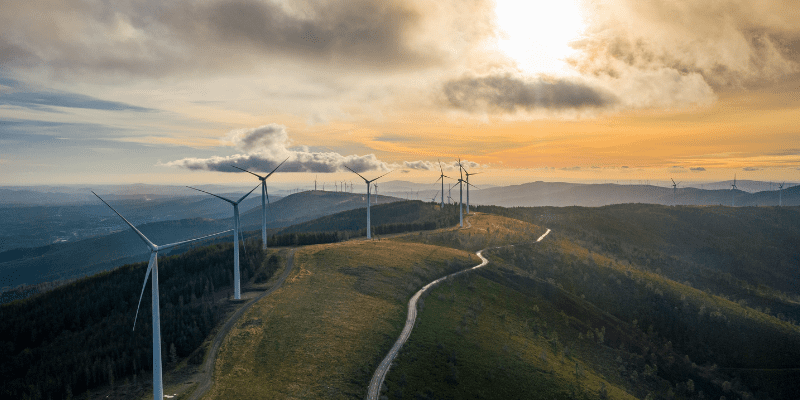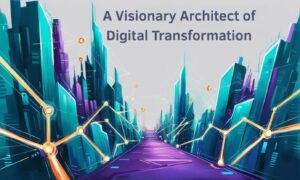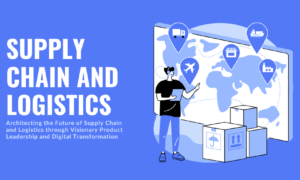In the age of rapid technological advancement and growing environmental concerns, sustainability and digital transformation have emerged as two intertwined concepts that hold the potential to shape the future of our planet. This synergy between sustainability and digital transformation has given rise to what can be aptly termed as the “Green Tech Revolution.” In this article, we will delve deep into the realm of sustainability, digital transformation, and their collaborative efforts to usher in a new era of environmental consciousness and technological innovation.
Introduction
The Green Tech Revolution: A Transformative Journey
Sustainability, as a concept, revolves around the responsible and efficient utilization of resources to meet the needs of the present without compromising the ability of future generations to meet their own needs. Digital transformation, on the other hand, entails the integration of digital technologies into all aspects of an organization, fundamentally altering how it operates and delivers value to its customers. When these two powerful forces converge, they create a transformative journey towards a more sustainable future, and this journey is what we refer to as the Green Tech Revolution.
Sustainable Practices in Digital Transformation
One of the primary ways in which digital transformation contributes to sustainability is through the adoption of sustainable practices in various industries. Here are some key aspects of this symbiotic relationship:
Energy Efficiency: Digital transformation often involves the implementation of energy-efficient technologies, such as cloud computing and data center optimization. These advancements reduce energy consumption, leading to lower carbon footprints and decreased environmental impact.
Paperless Operations: The transition to digital processes eliminates the need for paper-intensive operations, reducing deforestation and minimizing the carbon emissions associated with paper production and transportation.
Remote Work Solutions: The COVID-19 pandemic accelerated the adoption of remote work technologies. By reducing the need for daily commuting, remote work not only enhances work-life balance but also curtails greenhouse gas emissions from transportation.
Smart Cities: Digital transformation plays a pivotal role in the development of smart cities. These cities leverage technology to optimize energy usage, enhance public transportation, and reduce waste, making urban environments more sustainable.
Renewable Energy Integration
Digital transformation facilitates the integration of renewable energy sources into the grid. Through the use of IoT (Internet of Things) devices, data analytics, and smart grid technologies, renewable energy can be harnessed more efficiently and effectively. For example, predictive analytics can optimize the operation of wind turbines and solar panels, ensuring that energy is generated when it is most needed. This reduces reliance on fossil fuels and promotes the use of clean, sustainable energy sources.
Circular Economy through IoT
The Internet of Things (IoT) has opened up new avenues for the realization of a circular economy. IoT-enabled sensors can monitor the usage and condition of products and assets, facilitating resource optimization and waste reduction. This enables businesses to adopt circular practices, wherein products and materials are reused, refurbished, or recycled, thus reducing the overall environmental impact.
Sustainable Supply Chains
Digital transformation enhances supply chain visibility and traceability, which are essential for sustainability efforts. Through blockchain technology, companies can track the journey of products from raw materials to the end consumer, ensuring transparency and accountability. This minimizes the risk of environmental violations and unethical practices in the supply chain.
Data-Driven Environmental Management
The Green Tech Revolution also emphasizes data-driven decision-making for environmental management. Advanced analytics and AI algorithms process vast amounts of data related to energy consumption, emissions, and resource usage. This data-driven approach helps organizations identify areas where they can reduce their environmental footprint and make informed choices to promote sustainability.
Sustainable Innovation
The convergence of sustainability and digital transformation fosters innovation in various sectors. For instance, in agriculture, precision farming techniques powered by digital technology enable farmers to optimize crop yields while conserving resources. Similarly, in healthcare, telemedicine and digital health solutions reduce the need for physical visits, lowering the carbon emissions associated with travel.
Challenges and Considerations
While the Green Tech Revolution holds immense promise, it also presents certain challenges and considerations that need to be addressed:
Digital Divide: Ensuring that the benefits of digital transformation and sustainability are accessible to all segments of society is crucial. Bridging the digital divide and promoting inclusivity should be integral to the Green Tech Revolution’s agenda.
Data Privacy and Security: As digitalization increases, so do concerns about data privacy and security. Robust cybersecurity measures must be in place to protect sensitive information.
E-Waste: The rapid pace of technological innovation leads to the disposal of electronic waste (e-waste).
Conclusion
The Green Tech Revolution combines sustainability and digital transformation, offering a compelling vision. “It’s all about taking care of the environment, using resources wisely, and coming up with new ideas in technology. We’re using things like computers, clean energy, recycling, and smart data to make the world cleaner and more prosperous. People, companies, and governments know we have to act fast on climate change. This big change is like a map for a better future. It encourages us to use technology to make the planet greener.



































